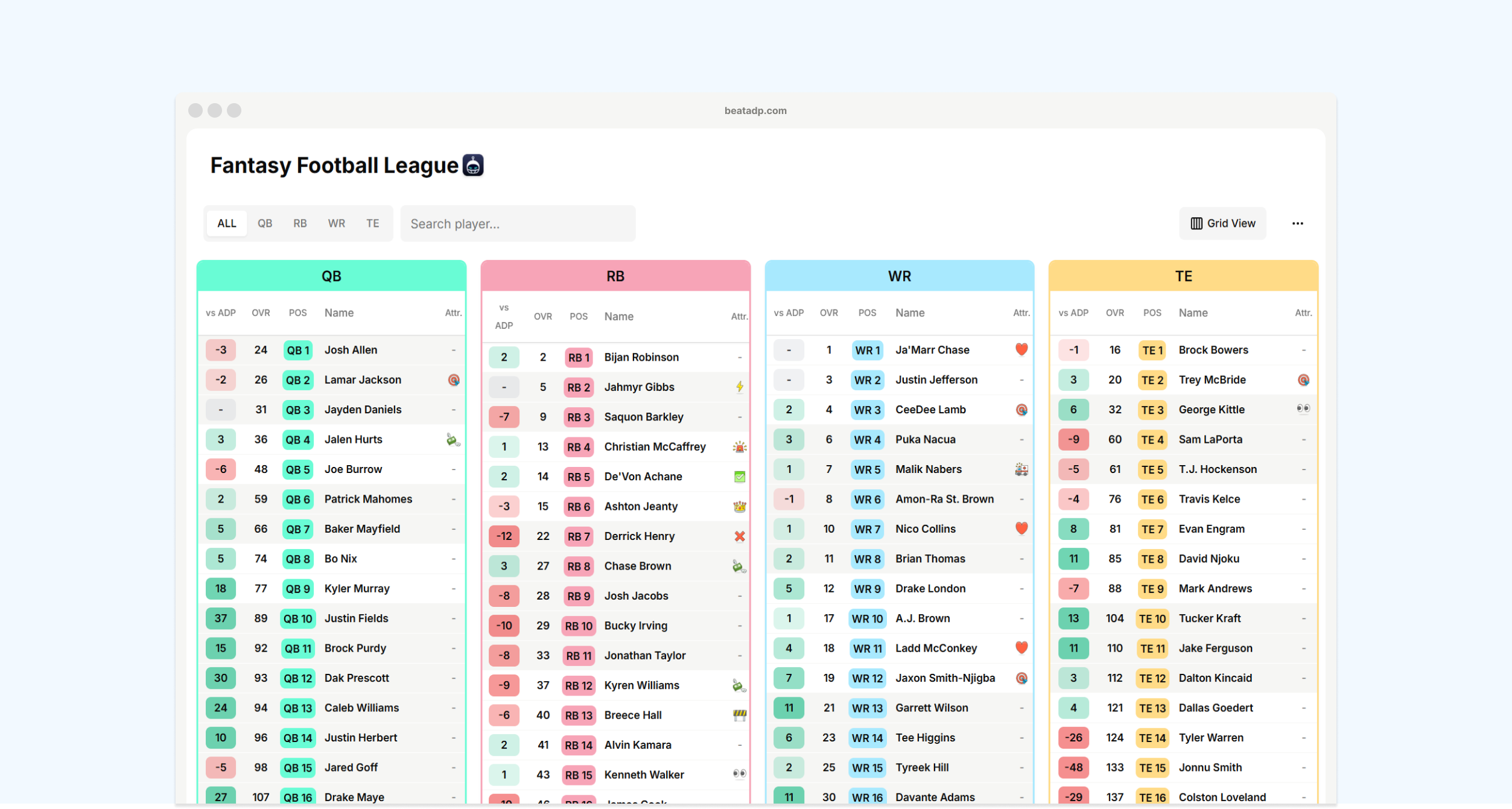How to Create a Fantasy Football Cheat Sheet That Wins

Introduction
A fantasy football cheat sheet is one of the most powerful draft-day tools you can have—if it’s built the right way.
Instead of copying rankings from an analyst or using platform defaults, creating your own cheat sheet helps you stay focused, make smarter picks, and avoid panic decisions. In this guide, we’ll walk through exactly how to create a cheat sheet that fits your strategy—and can actually help you win your draft.
Step 1: Understand Your League Settings
Before you rank a single player, make sure you know your league format inside and out:
- Scoring system (PPR, half-PPR, standard, 6-pt or 4-pt QB TDs, etc.)
- Roster size and starting positions
- Bench spots and flex positions
- Draft type (snake, auction, keeper, dynasty)
Your cheat sheet should reflect how your league scores and values positions. For example, tight ends matter more in 2-TE leagues, and pass-catching RBs rise in full-PPR.
Step 2: Start with a Base Ranking (Then Adjust)
You don’t need to build your cheat sheet from scratch. Start with a trusted base—such as consensus rankings, projections, or ELO-based rankings—and tweak from there.
Move players up or down based on:
- Personal preference or gut feeling
- Offseason news (injuries, trades, depth chart changes)
- Bye weeks or early-season matchups
- Stacking opportunities with other players on your roster
This step turns generic rankings into something that reflects how you want to draft.
Step 3: Use Tiers, Not Just Ranks
Tiers group players of similar value together, helping you make better decisions under pressure. For example:
- Tier 1 RBs: McCaffrey, Bijan, Breece
- Tier 2 RBs: Barkley, Pollard, Gibbs
When you’re on the clock, tiers tell you when a position is about to drop off. It’s a simple visual cue that makes your cheat sheet far more useful than a long 1-to-250 list.
Step 4: Compare to ADP (Find Value)
Comparing your rankings to Average Draft Position (ADP) is key. It helps you identify:
- Sleepers – Players you’re higher on than most
- Landmines – Players you like less than consensus
- Draft timing – When to wait vs. when to reach
This context gives your cheat sheet strategy. You’ll know when you can safely wait on a player and when you may need to reach to secure a favorite.
Step 5: Prepare for Live Draft Conditions
Draft day is fast-paced, and it’s easy to lose track. Your cheat sheet should be clear and actionable.
Helpful additions:
- Highlight or color-code players you love
- Add notes next to key names (e.g., “Avoid if WR1 gone”)
- Cross off players as they’re drafted
- Track what each team needs so you can anticipate runs
Using a tool that lets you do this live—like BeatADP—makes a big difference in staying organized and confident during your draft.
Tools That Make This Easier
You can build a cheat sheet in Excel or Google Sheets, but there are platforms that streamline the process.
One option is BeatADP, which lets you:
- Create rankings with drag-and-drop
- Set tiers, auction values, and notes
- Compare to ESPN and Sleeper ADP
- Sync directly with ESPN or Sleeper draft rooms
- Auto-cross off players as they’re drafted
Whether you’re drafting on desktop or mobile, having your cheat sheet adjust live as the draft progresses can be a major advantage.
Final Thoughts
Creating your own fantasy football cheat sheet isn’t about predicting the future—it’s about being prepared. By adjusting rankings to your league, using tiers, and comparing to ADP, you put yourself in a position to make calm, informed decisions when it matters most.
A great cheat sheet doesn’t guarantee a championship—but it gives you your best shot at one.
